"To develop a complete mind: Study the science of art; Study the art of science. Learn how to see. Realize that everything connects to everything else.” - Leonardo Da Vinci

(Translation from Bengali)
As is our play so is our work; don’t you know that dear friend.
So, fear we not our work; ever!
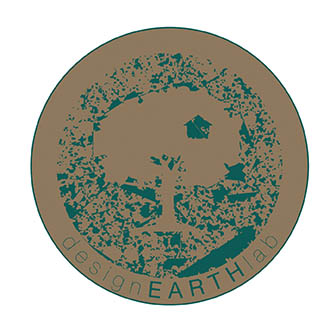
designEARTH lab
Lead Researcher: Arnab Basu
Founding Faculty & Co-Directors: Jackson Porretta & Arnab Basu
About designEARTH
'designEARTH' is a real-world laboratory that engages directly with material & space to reveal innovative solutions for the looming ecological crises. At the core, we are pedagogues/practicing artists/designers who find hope in direct action and social interventions.
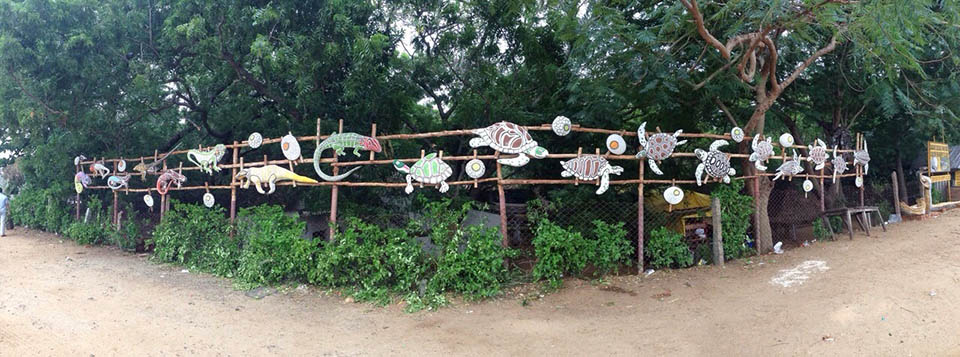
Explorations in ‘papercrete’. MCBT, Chennai. Image Courtesy: Srishti Institute, Jackson Porretta.
History
Originally conceived and christened as ‘Green Chakra Collective’; a community of practitioners were brought together by our founding faculty, Jackson Porretta. The collective comprising of Jackson Porretta and his ex-students from the ‘Drishya’ school, the Green Chakra Collective worked on live projects outside of the institutional scaffolding as well as, offered a unit called ‘Design Earth’ within the institutional space. Since the starting years, a lot of emphasis was given to community based projects involving earthen architecture and ecological design and this helped in shaping our core values as a community driven lab space.
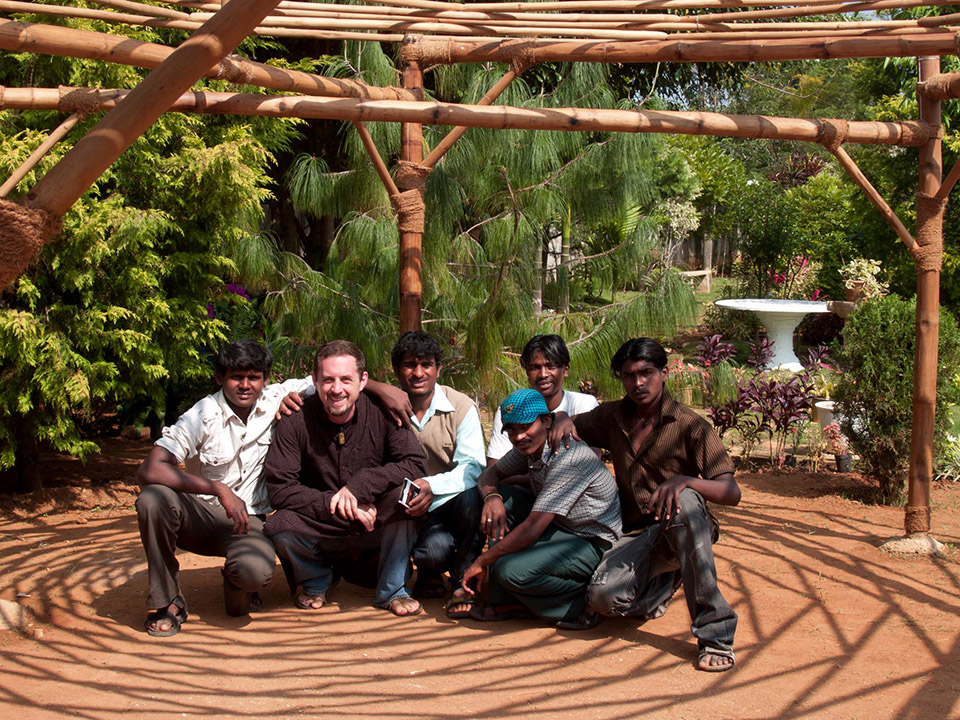
The Green Chakra Collective with their bamboo dome construction. Courtesy: Green Chakra Collective, Jackson Porretta.
The ‘designEARTH Lab’ has come from the collaborative brainstorming between Jackson Porretta and Arnab Basu with a lot of inputs from our friends and colleagues. Over the years, designEARTH Lab has ventured into other areas of practice such as; Land Art, Public Art, Material sciences, Conservation & Education, learning from and Documenting Indigenous Art & Craft Traditions, etc.
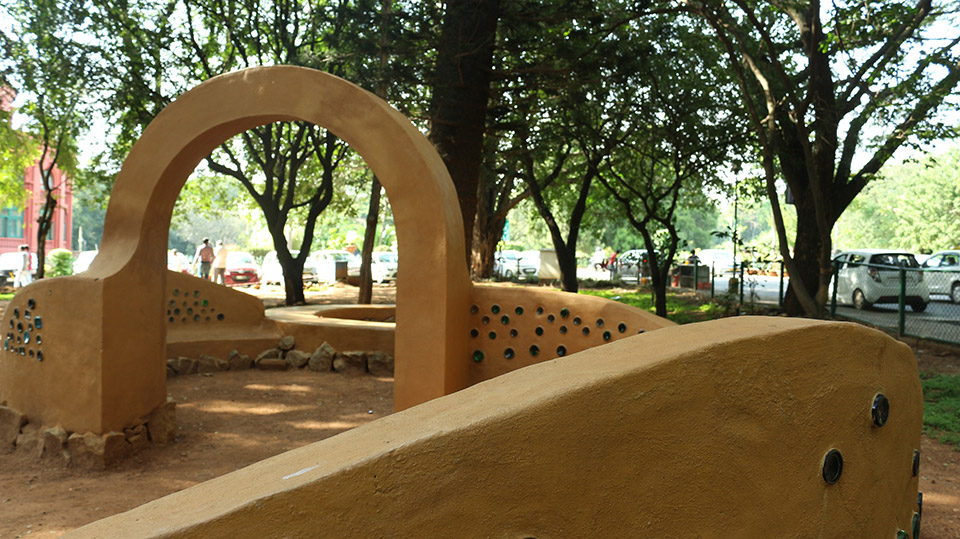
Mud bench and arch at Cubbon Park, Bangalore. Courtesy: Srishti Institute, Sushmita Hatte.
Vision
At designEARTH, we explore how to create beautiful, innovative, sustainable and socially relevant structures in 3-D, 2-D as well as in digital forms, through a hands-on process of material exploration/research & spatial intervention.
As artists and designers, we navigate the intersection of Art, Ecological Design, Conservation, Ephemeral Structures and Innovative Technologies; integrating it with pedagogical practices.
The ‘designEARTH approach’ focuses on committing to a strong work ethic, social as well as environmental consciousness, and an appreciation for aesthetic outcomes as a natural extension of the functional.
Through our collaborations, we aim to bring together like-minded people from diverse disciplines in creating a vast network of practitioners who share and learn from each other’s research and practices.
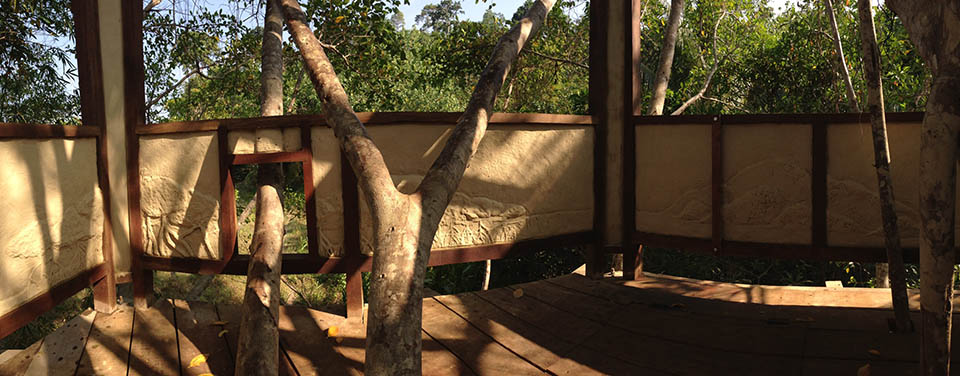
Combining traditional timber framing and mud architecture with relief sculpture. ANET, Andaman and Nicobar Islands. Image Courtesy: Srishti Institute, Pooja Gupta.
Research Areas and Inquiry
Our research areas and inquiries are broadly divided into two larger clusters which are:
Material science & Art practice
designEARTH lab has continued to push both the functional ability, and the physical properties of natural materials (primarily earth, bamboo & other organic materials) by intelligently combining them with industrial materials and up-cycled waste elements. There have been significant strides in the application of this material as a sculptural element (earthen relief murals & mixed media sculptural pieces as part of architectural elements and Land Art projects).

Mixing organic and reclaimed/industrial materials to develop new material languages. MCBT, Chennai. Image Courtesy: Srishti Institute, Arnab Basu.
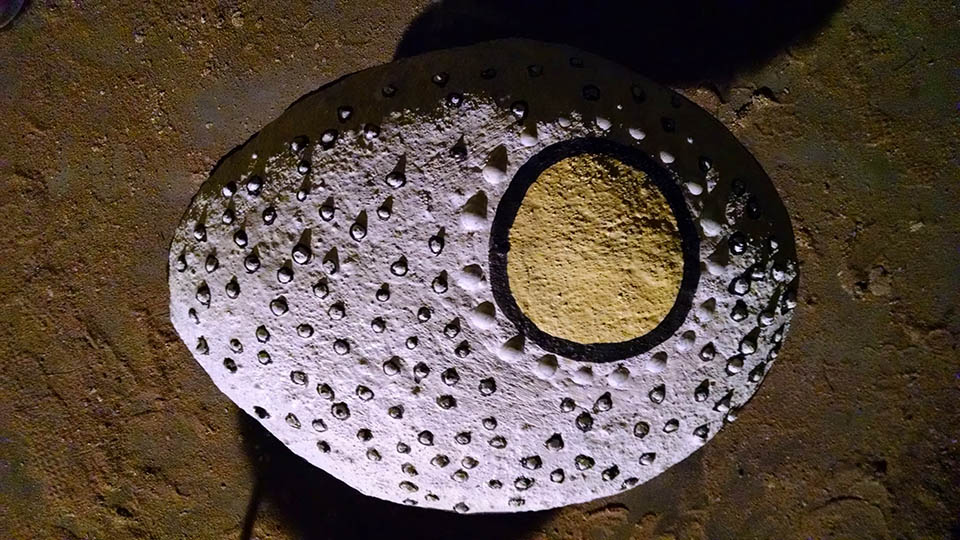
Explorations in paper, lime and cement. MCBT. Image Courtesy: Srishti Institute, Arnab Basu.
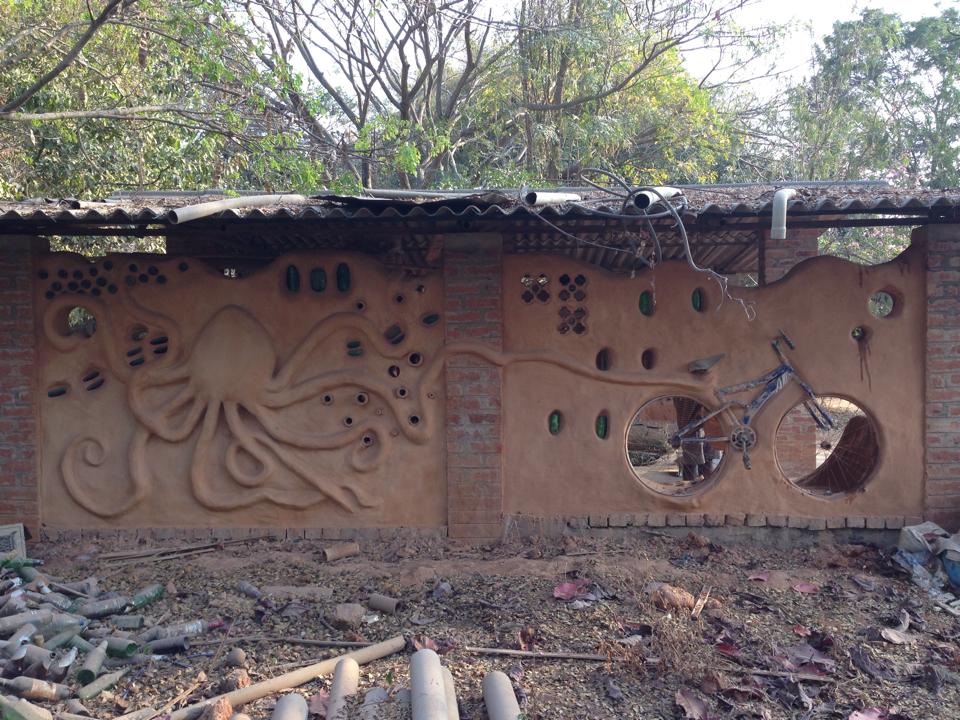
Mud wall mural with reclaimed objects. Bangalore. Image Courtesy: Srishti Institute, Jackson Poretta.
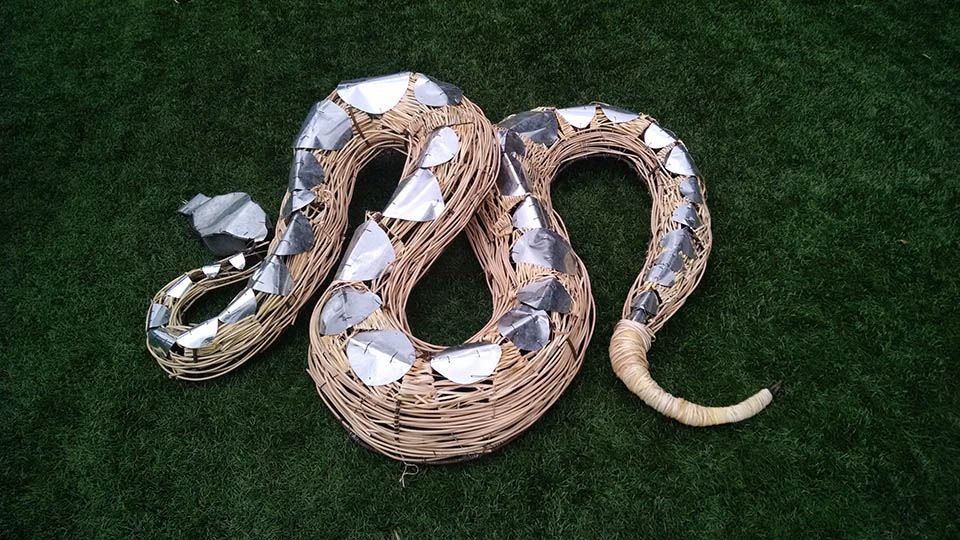
Mixing organic and industrial materials to develop new material languages. Image Courtesy: Srishti Institute, Jackson Poretta.
Conservation and creative education
designEARTH lab works in partnership with prominent ecologists/conservationists and scientists in developing creative solutions that address human-wildlife conflict, with a focus on ‘respectful co-inhabitation’ through design interventions using sustainable design practices and education.
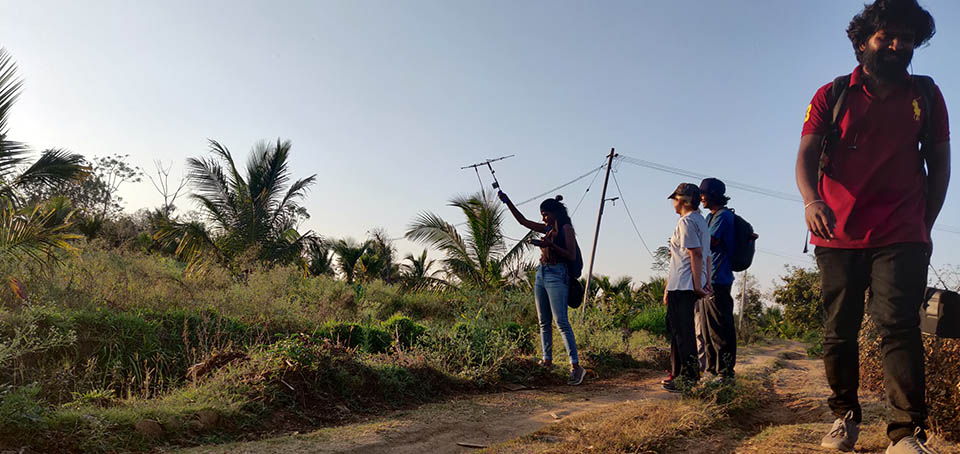
Radio tracking snakes as a part of immersion process. The Liana Trust, Hunsur. Image Courtesy: Srishti Institute, Arnab Basu.

Interacting with wild life experts and scientists. The Liana Trust, Hunsur. Image Courtesy: Srishti Institute, Arnab Basu.
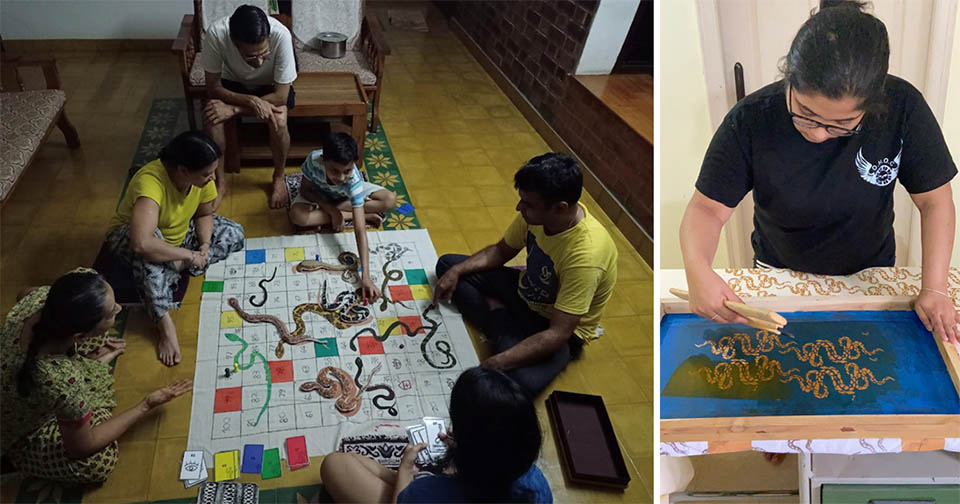
Developing educational tools and products that address human-snake conflict through creative interventions. Image Courtesy: Srishti Institute, Nivedita Jajoo & Vyusti Nangalia.
Some of the research methods we apply in our work are; Explore (Surveys, observations, case studies, and documentation), Experiment (Laboratory research and processing of materials, experimentation with materials and indigenous Art and Craft traditions, observation and documentation of material properties and language) and Envision (Playing with materials, systems and indigenous craft practices to push the boundaries of their properties/applications towards developing sustainable and ecologically viable creative solutions).
Current Research Projects
Currently we have one live research project ‘Creative Conservation’ and some others in the pipeline.
Creative Conservation:This project looks at the issues related to population over growth and urban expansion and how over the years this has led to human beings encroaching upon wilderness and habitats of other species. The constant incursions into the wild for the sharing of limited resources have created conflicts between humans and wildlife.
As of now, the world stands in a delicate balance and the issues around conservation and sharing of natural habitats/resources have become ever more important to address. There is a need for proper planning and education around conservation and ecological coexistence and this is where the ‘Creative Conservation’ project comes into play.
Born out of collaborative brainstorming by designEARTH lab with Gerry Martin and Chandini Chhabra of The Liana Trust, ‘Creative Conservation’ is a project that aims to explore possible Interventions and intersections into Snake-bite mitigation, conservation & education through sustainable/responsible design and creative artistic practices.
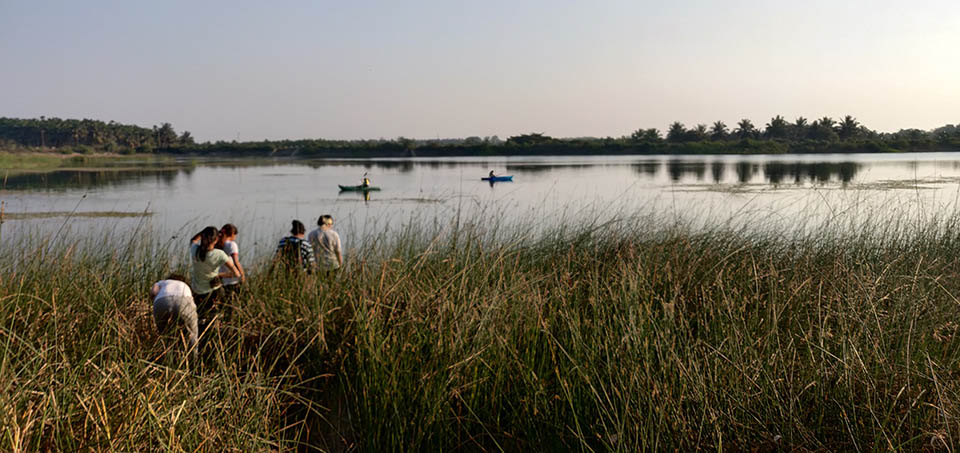
Site visit as a part of immersion process. TLT, Hunsur. Image Courtesy: Srishti Institute, Arnab Basu.
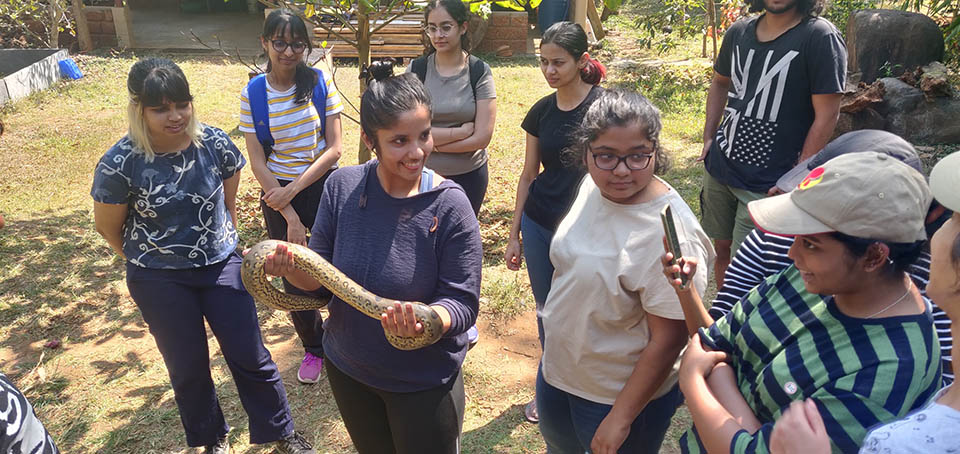
Understanding snake behaviour as a part of Immersion process. TLT, Hunsur. Image Courtesy: Srishti Institute, Arnab Basu.
Opportunities
1. Academic Programs
designEARTH lab offers opportunities for research as well as, hands on skill development for students enrolled in SMI’s under graduate and postgraduate programs. designEARTH lab offers units at the foundation studies programme as well.

A designEARTH unit in progress. Image Courtesy: Srishti Institute, Jackson Porreta.
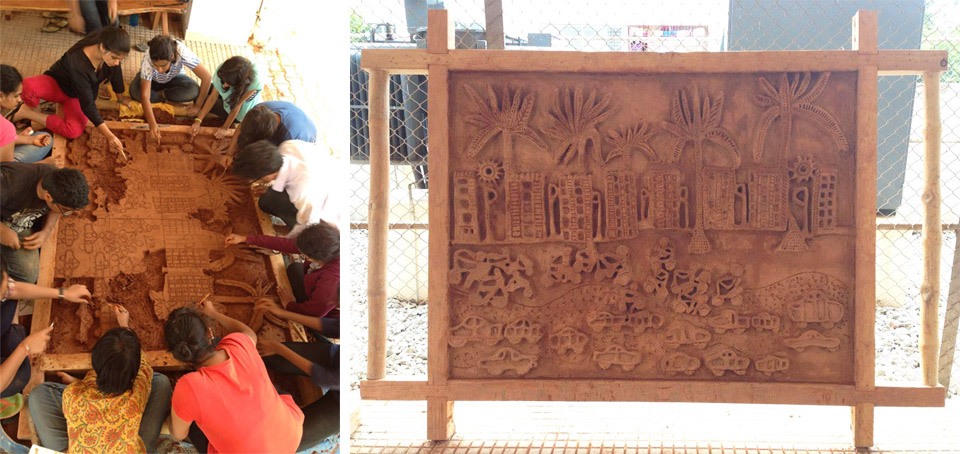
A designEARTH unit in progress. The finished Artefact. Image Courtesy: Srishti Institute, Jackson Porreta.
2. Internships
designEARTH lab may choose to offer internships to both under graduate and postgraduate level students either independently or in collaboration with one of our partners. This depends on our live projects and current requirements.
3. Collaborations & Partnerships
designEARTH lab collaborates with a diverse and wide network of Indian and international researchers, practitioners, and creative professionals working in the field of Ecological Design, Sustainability, Conservation, Natural Sciences, Film making, Visual Art, Architecture and Performance Art Practices. Please contact us for more information on this.
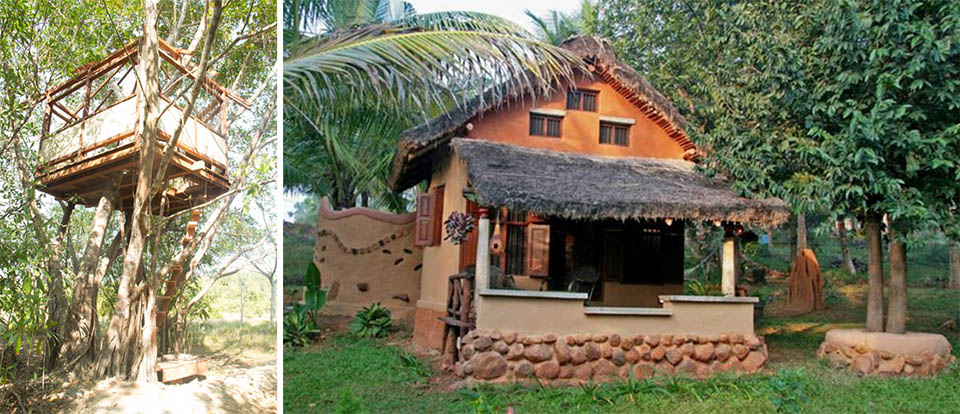
Tree house project at ANET. Mud architecture and murals at Rare Earth Farm. Image Courtesy: Srishti Institute, Jackson Porreta.
Some of our collaborators:
The Terrapin Farm.
Enthrallium Living Space Systems.
Madras Crocodile Bank Trust.
Andaman & Nicobar Environmental Team.
Agumbe Rainforest Research Station.
Art-In-Transit, Bangalore.
Horticulture Department, Cubbon Park.
The Liana Trust, Hunsur.
